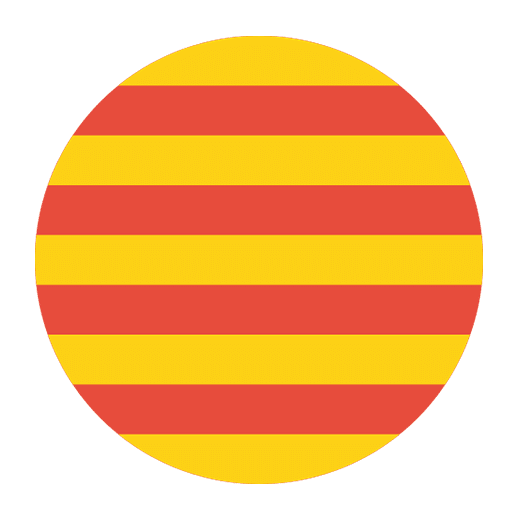Catalan, a Romance language spoken primarily in Catalonia, Valencia, the Balearic Islands, and parts of France and Italy, has experienced a renaissance in recent years. As globalization and digitalization have brought about significant changes in the way languages are taught and learned, Catalan language education has also adapted to modern trends. This article will explore these contemporary movements, examining how technology, cultural initiatives, and pedagogical innovations are shaping the future of Catalan language learning.
Technological Advancements in Language Learning
One of the most significant trends in modern Catalan language education is the incorporation of technology. Digital tools and platforms are revolutionizing the way learners engage with the language, making education more accessible and interactive.
Online Learning Platforms
Online platforms such as Duolingo, Babbel, and Memrise have included Catalan in their roster of languages, making it easier for learners worldwide to access high-quality language instruction. These platforms utilize gamification techniques to keep learners engaged, offering a fun and interactive way to practice vocabulary, grammar, and pronunciation.
Additionally, dedicated websites like Parla.cat provide comprehensive resources specifically designed for learning Catalan. These platforms offer structured courses, exercises, and multimedia resources, enabling learners to progress at their own pace.
Mobile Applications
Mobile applications have become an indispensable tool for language learners. Apps like Tandem and HelloTalk connect learners with native speakers for language exchange, facilitating real-world practice and cultural immersion. These applications often come with features like instant translation, voice recognition, and language games, making learning more dynamic and versatile.
Virtual Reality (VR) and Augmented Reality (AR)
Emerging technologies such as VR and AR are also making their way into language education. These technologies offer immersive experiences that can simulate real-life scenarios, providing learners with a practical context to practice their language skills. For instance, VR can transport learners to a virtual Catalan-speaking environment, allowing them to navigate through everyday situations and interact with virtual characters.
Innovative Pedagogical Approaches
Modern Catalan language education is also benefiting from innovative pedagogical approaches that prioritize communication, cultural understanding, and learner autonomy.
Task-Based Language Teaching (TBLT)
Task-Based Language Teaching focuses on the completion of meaningful tasks that reflect real-life language use. In Catalan language classrooms, this approach might involve activities like planning a trip to Catalonia, conducting interviews, or creating a multimedia project about Catalan culture. TBLT encourages active learning and helps students develop practical language skills that they can use in everyday situations.
Content and Language Integrated Learning (CLIL)
CLIL is an educational approach where subjects are taught in a foreign language, integrating language and content learning. In Catalan language education, this might involve teaching subjects like history, geography, or science in Catalan. This method not only enhances language proficiency but also deepens learners’ understanding of the subject matter and the cultural context of the language.
Flipped Classroom
The flipped classroom model reverses the traditional learning environment by delivering instructional content, often online, outside of the classroom. In-class time is then used for interactive activities, such as discussions, group work, and hands-on practice. This approach allows learners to absorb theoretical knowledge at their own pace and apply it in a collaborative setting, fostering a deeper understanding of the language.
Cultural Initiatives and Community Engagement
Language learning is inherently tied to cultural understanding, and modern Catalan language education places a strong emphasis on cultural immersion and community engagement.
Cultural Festivals and Events
Catalonia is known for its rich cultural heritage, and festivals like La Mercè, Sant Jordi, and the Castells (human towers) offer unique opportunities for language learners to immerse themselves in Catalan culture. Participating in these events allows learners to practice their language skills in a natural and engaging context, while also gaining a deeper appreciation of Catalan traditions and customs.
Language Exchange Programs
Language exchange programs, both physical and virtual, provide learners with the chance to interact with native speakers and practice their language skills in real-world situations. These programs often include cultural activities, workshops, and excursions, creating a holistic learning experience that combines language practice with cultural exploration.
Community Centers and Language Schools
Community centers and language schools play a crucial role in promoting Catalan language education. These institutions offer a variety of courses and workshops for learners of all levels, from beginners to advanced speakers. They also serve as hubs for cultural activities, providing a space for learners to connect with the local Catalan-speaking community and participate in cultural events.
Government and Institutional Support
The revival and promotion of the Catalan language have been strongly supported by government policies and institutional initiatives.
Language Policies and Legislation
Catalonia’s regional government has implemented various language policies aimed at promoting the use of Catalan in public life and education. The Generalitat de Catalunya (Government of Catalonia) has established regulations that mandate the use of Catalan in schools, ensuring that students receive instruction in the language from an early age. These policies have been instrumental in preserving and revitalizing the Catalan language.
Funding and Scholarships
To encourage the study of Catalan, various scholarships and funding opportunities are available for language learners. Institutions like the Institut Ramon Llull offer financial support for students, researchers, and professionals who wish to study Catalan language and culture. These initiatives help remove financial barriers and make language education more accessible.
Research and Collaboration
Academic institutions and research centers play a vital role in advancing Catalan language education. Universities and linguistic research centers collaborate on studies related to language acquisition, teaching methodologies, and cultural integration. These collaborations contribute to the development of evidence-based practices and innovative teaching strategies that enhance the effectiveness of Catalan language education.
Challenges and Future Directions
While there have been significant advancements in Catalan language education, there are also challenges that need to be addressed to ensure its continued growth and development.
Balancing Language Diversity
Catalonia is a linguistically diverse region, with Spanish and Catalan coexisting alongside other languages spoken by immigrant communities. Striking a balance between promoting Catalan and respecting linguistic diversity can be challenging. Efforts must be made to create an inclusive environment where all languages are valued and learners feel supported in their language acquisition journey.
Adapting to Technological Changes
As technology continues to evolve, language education must keep pace with new developments. Educators need to stay informed about the latest tools and methodologies and be willing to integrate them into their teaching practices. Ongoing professional development and training are essential to ensure that teachers can effectively utilize technology to enhance language learning.
Engaging the Global Community
To further promote Catalan language education, there is a need to engage the global community. This can be achieved through partnerships with international institutions, participation in global language initiatives, and the promotion of Catalan culture on a global stage. By raising awareness of the Catalan language and culture, more learners worldwide will be encouraged to take up the study of Catalan.
Conclusion
Modern trends in Catalan language education reflect a dynamic and evolving landscape that embraces technology, innovative pedagogy, cultural immersion, and institutional support. As digital tools and platforms make language learning more accessible, and as pedagogical approaches prioritize real-world application and cultural understanding, learners are better equipped to achieve proficiency in Catalan. Government policies and community initiatives further bolster these efforts, ensuring that the Catalan language continues to thrive.
While challenges remain, the future of Catalan language education looks promising. By addressing these challenges and continuing to innovate, educators and institutions can create a vibrant and inclusive environment for learners, fostering a deeper connection to the Catalan language and culture. Whether through online platforms, immersive cultural experiences, or community engagement, the journey to mastering Catalan is more accessible and enriching than ever before.

